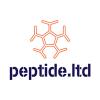
Lostfalco's Extensive Nootropic Experiments [Curated]
#31
Posted 29 April 2013 - 05:05 PM
If anybody finds more info, please share...dose, side effects, experiences, etc. All knowledge is provisional. Let each do their best with the current state of evidence.
#32
Posted 29 April 2013 - 05:13 PM
#33
Posted 29 April 2013 - 05:18 PM
But what about Valproic Acid?Pubmed sodium butyrate + learning/memory/etc for more info....if you have the time/inclination. If not, no worries. As I said, most are rodent studies.
If anybody finds more info, please share...dose, side effects, experiences, etc. All knowledge is provisional. Let each do their best with the current state of evidence.
#34
Posted 29 April 2013 - 05:24 PM
But what about Valproic Acid?Pubmed sodium butyrate + learning/memory/etc for more info....if you have the time/inclination. If not, no worries. As I said, most are rodent studies.
If anybody finds more info, please share...dose, side effects, experiences, etc. All knowledge is provisional. Let each do their best with the current state of evidence.
I seem to recall reading about some unwanted side effects with Valproic Acid usage. I cant cite anything specific off the top of my head but as always consult the interweb
#35
Posted 29 April 2013 - 05:26 PM
And here's one with some more general info: http://medicine.bjmu.../1333186953.pdf ("Potency: mM")
...Unfortunately, both valproate and butyrate are exceedingly poor inhibitors. Valproate seems like it would be an anti-nootropic, besides...
I'm going on memory, and I could well be wrong, but I think that sulforaphane (more specifically, its metabolites,) and phenethyl isothiocyanate are decent HDAC inhibitors with IC50s in the low micromolar range.
#36
Posted 29 April 2013 - 05:51 PM
I tried butyrate on my hair as a possible HIC-5 inhibitor. Stunk my bathroom up for a week
Edited by abelard lindsay, 29 April 2013 - 05:54 PM.
#37
Posted 29 April 2013 - 08:25 PM
Have you tried CILTEP? I've had really good results lately with 25mg Zembrin + 5mg Forskolin and over the last year with Artichoke Extract + Forskolin. If you follow Dave Asprey or Tim Ferris, you've probably heard of this. Thanks for all the great research. It's good to see someone exploring new techniques.
I tried butyrate on my hair as a possible HIC-5 inhibitor. Stunk my bathroom up for a weekbut it kind of worked. Too bad I'd have to use it outside in a bucket or something. Do you notice any hair loss improvements when it is taken internally?
I have not tried it but it is certainly on my list. Will read back through your thread to refresh myself on the theory and details before trying your 25mg Zembrin iteration. Love your posts btw.
Have read 4 Hour Body, 4 Hour Workweek and am working on 4 Hour Chef...heard Ferris mention it again recently on Rogan's show. Pretty cool.
No hair loss improvements from NaB so far. ha And...you're not kidding, that stuff smells like pure butt.
#38
Posted 29 April 2013 - 08:35 PM
But what about Valproic Acid?Pubmed sodium butyrate + learning/memory/etc for more info....if you have the time/inclination. If not, no worries. As I said, most are rodent studies.
If anybody finds more info, please share...dose, side effects, experiences, etc. All knowledge is provisional. Let each do their best with the current state of evidence.
Recent Study I skimmed...http://www.ncbi.nlm.nih.gov/pubmed/22992332 or pubmed (yes, I'm using it as a verb like 'google it' or 'facebook me', ha) valporic acid + d-cycloserine
It's just an interesting idea for me right now, nothing more. Would love to learn more during sleep. Russian CES studies come to mind as well as a completely off label and untested use for Trigeminal Nerve Stimulation (studied at UCLA for epilepsy; Monarch device is approved for Europe; pretty much looks like a glorified muscle stimulator to me with electrodes placed on the forehead trigeminal nerves...more research needed)
But what about Valproic Acid?Pubmed sodium butyrate + learning/memory/etc for more info....if you have the time/inclination. If not, no worries. As I said, most are rodent studies.
If anybody finds more info, please share...dose, side effects, experiences, etc. All knowledge is provisional. Let each do their best with the current state of evidence.
I seem to recall reading about some unwanted side effects with Valproic Acid usage. I cant cite anything specific off the top of my head but as always consult the interweb
I recall something similar as well. Will have to look up details after work.
#39
Posted 29 April 2013 - 09:09 PM
The reason I ask is because there have been promising studies lately even though early studies were negative.Recent Study I skimmed...http://www.ncbi.nlm.nih.gov/pubmed/22992332 or pubmed (yes, I'm using it as a verb like 'google it' or 'facebook me', ha) valporic acid + d-cycloserine
Valproic acid increases white matter repair and neurogenesis after stroke
http://www.sciencedi...306452212006124
#40
Posted 29 April 2013 - 09:26 PM
....If those researchers wanted to investigate "HDAC inhibitors" they should start with something like trichostatin-A, as it's reasonably potent and selective. Butyrate isn't a drug-like molecule, and valproic acid is a very 'dirty' drug: A GABA-transaminase inhibitor, a modulator of neuronal ion channels, and an inducer of PKB/Akt in the brain. Like lithium, it also inhibits GSK-3B and PKC. And that's not even the half of it...
#41
Posted 29 April 2013 - 11:14 PM
#42
Posted 30 April 2013 - 12:16 AM
Also is there a risk that it burns off your skin?
#43
Posted 30 April 2013 - 12:24 AM
HULK SMASH!

Edited by yadayada, 30 April 2013 - 12:21 AM.
#44
Posted 30 April 2013 - 01:49 AM
Is the vetrolaser truly worth it? Where are the studies about it?
Also is there a risk that it burns off your skin?
Admittedly, the Vetrolaser is expensive. I only mention it because it's the device I use and I've been happy with it. It's a lot cheaper than $4000 medical lasers...check out Thor lasers for comparison. However, if you can do it for $5, do it. I attempted much cheaper alternatives for early experiments. Go to Alibaba or Ebay and type in 808nm or 810nm and look for various led or laser devices; there are many. Current studies seem to indicate that this wavelength penetrates skin and bone the best and is accepted by the CCO photoreceptor (see Tiina Karu's work).
200mW will not burn your skin. 325mW/cm2 is the currently accepted limit for skin. I've used the Vetrolaser and the Tendlite (660nm, 500mW) hundreds of times now without even a noticeable heating of skin. btw, the Tendlite is much wider than 1cm2 which is why the 500mW doesn't burn. I tested on my hand first...1 second at 2 inches away, then 1 second at 1 inch away, then 5 seconds at 2 inches, etc.... Now I put it directly on skin. I think you are very reasonable for wanting to cautiously test it. I would do the same thing myself.
#45
Posted 30 April 2013 - 01:57 AM
Lol, it's 200mw of a constant stream of energy hitting your brain. I'd be really cautious with it.
HULK SMASH!
One current theory about how it works is that the photons cause electrons to move from a ground state to an excited state...then, energy is released when the electron moves back down to it's initial ground state (with a million more scientific details as always). Thus, you are actually adding energy to your 'system' in a fairly novel way for humans (plants know a little something about this). Fascinating. True? Not sure.
Now I know why I threw that car at my landlord yesterday.
#46
Posted 30 April 2013 - 02:07 AM
That would seem to increase the wear and tear on your glial and other neural cells in the brain. Need to read up on it.Lol, it's 200mw of a constant stream of energy hitting your brain. I'd be really cautious with it.
HULK SMASH!
One current theory about how it works is that the photons cause electrons to move from a ground state to an excited state...then, energy is released when the electron moves back down to it's initial ground state (with a million more scientific details as always). Thus, you are actually adding energy to your 'system' in a fairly novel way for humans (plants know a little something about this). Fascinating. True? Not sure.
Now I know why I threw that car at my landlord yesterday.
I once thought about how microwaves work and how an energy cap could be construed to supply energy to the brain in the form of low heat and such. Lol. Getting into the realm of magic helms and the such.
#47
Posted 30 April 2013 - 02:26 AM
#48
Posted 30 April 2013 - 03:01 AM
I'm sure most of you also know about gwern's nootropic log at gwern.net. If not, it's a must read. He's one of the few of us who actually attempts to blind himself when taking noots...and he's tried a lot. He is also one of the most reasonable and intelligent people on the web. My highest recommendation.
#49
Posted 30 April 2013 - 03:07 AM
Neuroscience. 2013 Jan 29;230:13-23. doi: 10.1016/j.neuroscience.2012.11.016. Epub 2012 Nov 27.
Transcranial infrared laser stimulation produces beneficial cognitive and emotional effects in humans.
Barrett DW, Gonzalez-Lima F.
Source
Department of Psychology and Institute for Neuroscience, University of Texas at Austin, Austin, TX 78712, USA.
Abstract
This is the first controlled study demonstrating the beneficial effects of transcranial laser stimulation on cognitive and emotional functions in humans. Photobiomodulation with red to near-infrared light is a novel intervention shown to regulate neuronal function in cell cultures, animal models, and clinical conditions. Light that intersects with the absorption spectrum of cytochrome oxidase was applied to the forehead of healthy volunteers using the laser diode CG-5000, which maximizes tissue penetration and has been used in humans for other indications. We tested whether low-level laser stimulation produces beneficial effects on frontal cortex measures of attention, memory and mood. Reaction time in a sustained-attention psychomotor vigilance task (PVT) was significantly improved in the treated (n=20) vs. placebo control (n=20) groups, especially in high novelty-seeking subjects. Performance in a delayed match-to-sample (DMS) memory task showed also a significant improvement in treated vs. control groups as measured by memory retrieval latency and number of correct trials. The Positive and Negative Affect Schedule (PANAS-X), which tracks self-reported positive and negative affective (emotional) states over time, was administered immediately before treatment and 2 weeks after treatment. The PANAS showed that while participants generally reported more positive affective states than negative, overall affect improved significantly in the treated group due to more sustained positive emotional states as compared to the placebo control group. These data imply that transcranial laser stimulation could be used as a non-invasive and efficacious approach to increase brain functions such as those related to cognitive and emotional dimensions. Transcranial infrared laser stimulation has also been proven to be safe and successful at improving neurological outcome in humans in controlled clinical trials of stroke. This innovative approach could lead to the development of non-invasive, performance-enhancing interventions in healthy humans and in those in need of neuropsychological rehabilitation.
#50
Posted 30 April 2013 - 10:43 AM
Here's a link to Dave Asprey's Youtube video on brain hacks in which you can actually see him laser his brain...http://www.youtube.com/watch?v=Sc7NNr8KnYs. Go to 9:40 for the laser part. He uses 880nm but most studies I've seen recommend 808nm-810nm which is why I chose it.
I really like your quote that we live in amazing time, its very true
So something like "Focusable 808nm 810nm IR Infrared 50mW Laser Lazer Line" from ebay/alibaba can simply do its job? They are $25 only
#51
Posted 30 April 2013 - 01:53 PM
#52
Posted 01 May 2013 - 11:10 AM
I will buy 3 to 6 of those and build my own poor man's LLL system: http://www.ebay.com/...item3ccfd8683a. I will screw off the lens part and if the laser light is red it cant be off too much from claimed 830nm. Or this one: http://www.ebay.com/...item2c6c4553b6. But here the covering glass seems irremovable.
Edited by mait, 01 May 2013 - 11:24 AM.
#53
Posted 01 May 2013 - 01:32 PM
I had course on neuropsychological rehabilitation methods last year and I did my homework assignment on literature of DCS and light therapy (including MIT paper discussed above). I was so close of ordering a LED cluster as custom made electronic device but the sudden turn of financial situation prohibited this. Now reading those reports again has re-vitalized this plan.
I will buy 3 to 6 of those and build my own poor man's LLL system: http://www.ebay.com/...item3ccfd8683a. I will screw off the lens part and if the laser light is red it cant be off too much from claimed 830nm. Or this one: http://www.ebay.com/...item2c6c4553b6. But here the covering glass seems irremovable.
Thanks for the info. That's very cool. I looked into this idea extensively as well. Luckily, I got a small bonus at work and was able to try out the expensive Vetrolaser. I think everybody here would love to hear your experiences once you try it out. $25-$50 is so much more reasonable. Let us know how it goes.
#54
Posted 01 May 2013 - 04:01 PM
#55
Posted 01 May 2013 - 07:37 PM
http://www.sciencedi...028390812003012
#56
Posted 01 May 2013 - 08:27 PM
Indeed, I was just curious but it is quite reckless to laser your brain, who knows if it doesn't kill some neurons in its course.I'm super hesitant to recommend something that is not a medical device...there is not as much regulation of infrared flashlights and led clusters for night time video recording. Actually, you have to be really careful with all of this stuff of course. I would start with led lights first because they are not as powerful...usually they are 5-15mW each in power. They are also relatively inexpensive. I hope that gives you a few ideas. As far as possible...I always ultimately try to just imitate the parameters of the actual scientific studies as closely as possible. Check out the mixed clusters used in the Margaret A. Naeser 2010 study of two brain injury patients...it's an MIT Open Access Article. Be safe! Let me know how it goes for you.
Anyway have you ever tried a tdcs device and would you recommend one in particular? I'm interested in trying them out but it's quite costful so I need to know if it's worth it...
Is that the study about fiber inhibiting HDAC2? http://www.ncbi.nlm....pubmed/23195070
If I get it right, it's just preventing from serotonin to be transported hence increasing dopamine in the brain?
#57
Posted 02 May 2013 - 02:12 AM
Indeed, I was just curious but it is quite reckless to laser your brain, who knows if it doesn't kill some neurons in its course.I'm super hesitant to recommend something that is not a medical device...there is not as much regulation of infrared flashlights and led clusters for night time video recording. Actually, you have to be really careful with all of this stuff of course. I would start with led lights first because they are not as powerful...usually they are 5-15mW each in power. They are also relatively inexpensive. I hope that gives you a few ideas. As far as possible...I always ultimately try to just imitate the parameters of the actual scientific studies as closely as possible. Check out the mixed clusters used in the Margaret A. Naeser 2010 study of two brain injury patients...it's an MIT Open Access Article. Be safe! Let me know how it goes for you.
Anyway have you ever tried a tdcs device and would you recommend one in particular? I'm interested in trying them out but it's quite costful so I need to know if it's worth it...
Is that the study about fiber inhibiting HDAC2? http://www.ncbi.nlm....pubmed/23195070
If I get it right, it's just preventing from serotonin to be transported hence increasing dopamine in the brain?
I originally found an iontophoresis device on ebay for $50 but now I use this device...http://www.scriphessco.com/products/activa-activadose-ii-iontophoresis-device/
One of the best training videos that I have watched is this one...http://www.jove.com/video/2744/electrode-positioning-montage-transcranial-direct-current
This site also has a ton of great info...http://www.diytdcs.com/
My main point was that butyrate is produced when fiber is fermented in our gut. Unfortunately, butyrate is a non-specific HDAC inhibitor which means that it inhibits HDAC2 plus others. Here's a post by neurobiologist Stephan Guyenet on butyrate...http://wholehealthsource.blogspot.com/2009/12/butyric-acid-ancient-controller-of.html
Here's a recent attempt to develop a more specific HDAC inhibitor targeted at learning enhancement...http://www.sciencedirect.com/science/article/pii/S0028390812003012
#58
Posted 02 May 2013 - 02:16 AM
No problem! That whole issue is badass. So many ideas I'd never thought of.Heres another study on HDAC I found in the Neuropharmacology volume you linked earlier. There are some damn interesting articles in there. Great find lostfalco!
http://www.sciencedi...028390812003012
#59
Posted 02 May 2013 - 03:41 AM
#60
Posted 02 May 2013 - 04:45 AM
Yes, my friends...some day soon. Let's hear it for exponential growth! http://www.technolog...emory-implants/
IMHO The future will probably turn out more like this:
http://en.wikipedia....2Schismatrix.22
...
- Shapers: Group that alters the body through genetic modification and specialized mental training. They originate from the colonies orbiting Jupiter and Saturn.
- Mechanists: Group that modifies bodies through computer software and external alterations. The Mechanists have been at war with the Shapers for decades, fighting over whose technology is more powerful and efficient. They originate from the asteroid belt's colonies.
- Zen Serotonin: A cult that uses biofeedback (principally neurochemical-deploying biomonitors and sleep-monitoring beds) to maintain zen-like calm and detachment. The "Nonmovement" (as it is sometimes called) looks to slow the process of societal change, and has a strong focus on social order.
Also tagged with one or more of these keywords: nootropic
Science & Health →
Brain Health →
Nootropic Stacks →
how would you describe Cerebrolysin to a person unfamiliar to nootropics?Started by davidwood557 , 01 Oct 2024 |
|

|
||
Round Table Discussion →
Business →
Retailer/Product Discussion →
J 147 Powder to Treat Alzheimer’s DiseaseStarted by Peptide.ltd , 18 Apr 2024 |
|

|
||
Science & Health →
Brain Health →
Montelukast?Started by mp_double , 25 Jan 2024 |
|

|
||
Science & Health →
Brain Health →
Nootropic Stacks →
What are the most effective NOOTROPICS based on science?Started by Forever21 , 30 Oct 2021 |
|

|
||
Science & Health →
Brain Health →
Dihexa?Started by brendan1 , 05 Sep 2021 |
|

|
2 user(s) are reading this topic
0 members, 2 guests, 0 anonymous users












































